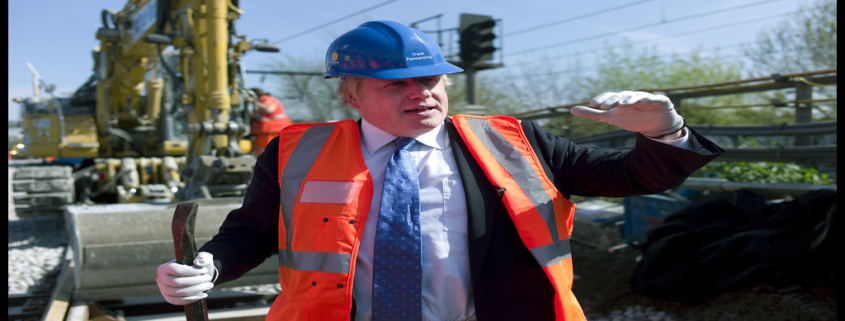Fire Compartmentation in Hotels
/in Fire Protection, Home Page news feed, NewsWhat is the Purpose of Compartmentation?
- Prevent the spread of fire, smoke and toxic gas
- Breaks the building down into manageable areas of risk
- Contains the fire to provide time for occupants to safely evacuate the premises
- All doors (including hatches, ducts and vertical shafts), floors, walls, and ceilings should be made with fire resistant materials specifically rated so that if a fire were to break out, they would contain the fire and smoke for long enough for people to evacuate.
- Where suspended or false ceilings are provided, fire resistant materials should extend up to the floor slab level above.
- Cavity barriers, fire stopping and dampers
What are the Fire Protection Systems?
Fire Safety Tips and Checklist for Hotels
- Provide fire safety training for all employees and have a detailed evacuation plan that is rehearsed at minimum twice a year.
- Fire risk assessments should be carried out annually or if there have been changes made to the building.
- Fire alarms should be tested weekly.
- Equipment checks, training and fire evacuation drills should be recorded in the fire safety book.
- Emergency lights should be fully functioning and tested at regular intervals. They are mandatory in stairwells, hallways and public rooms.
- Fire doors should be in full working order with no damage to them and should never be wedged open.
- Checks of the building where fire alarms and escape routes are tested.
- Fire action notices should be made available at all call points and in resident’s rooms so they are clear of the evacuation plan in the event of a fire.
- All emergency exit signs should be visible and illuminated.
- Fire extinguishers should be checked for damage and arranged to be replaced as soon as possible.
The Broadsword Promise
Passive Fire Protection in Hospitals
/in Fire Protection, Home Page news feed, NewsFire safety including passive fire protection in hospitals is of the utmost importance particularly when considering the number of potentially vulnerable people at risk on the premises. Hospitals could not only find themselves financially liable for millions of pounds in repairs, they could also face the possibility of prison sentences and fines should they be found negligent for not having the correct systems in place. The cost of not complying with the law far outweighs the cost of installing the correct systems and should be a priority for all healthcare facilities.
What is Passive Fire Protection?
Passive fire protection is the use of fire-resistant materials and structural components that look to separate the building into different areas of risk. Essentially, they work to slow the spread of fire and smoke, to protect the structural integrity of the building and to provide time for all occupants of the building to evacuate. Passive fire protection is a component of a total fire protection system that looks to collaboratively suppress and resist fire. Passive fire protection looks to contain fire and is achieved through the installation of columns, walls, floors and doors. Each of these need to prevent structural collapse, heat conduction and the spread of smoke and noxious gases to be considered effective.
Fire Safety and the Law
Lessons from History
What Passive Fire Protection is required in Hospitals?
- Fire Doors and Compartmentalisation – Hospitals face unique challenges when considering fire evacuation due to the consideration required to be given to vulnerable patients receiving care. The condition of these patients may result in total evacuation not being possible. With this in mind, fire doors and compartment lines are essential for the building’s fire protection strategy, preventing the spread of fire and smoke and allowing time for patients to be recovered. Compartmentalisation is critical when containing a fire and is achieved through the use of fire resistance floors, walls and cavity barriers. All fire-resistant materials are rated to withstand fire for a certain amount of time. Currently, the fire doors in NHS hospitals offer 30 minutes of protection with some offering more in buildings containing more vulnerable patients where evacuation may take longer.
- Fire Door Survey and Restoration – As well as installing the right type of fire doors, it is essential to that they are checked regularly to ensure their efficacy in the event of a fire. With many fire doors being used by the hospital on a daily basis, it is not uncommon for them to be damaged by trolley, wheelchairs and people. Significant damage to a fire door will affect its fire resistance rendering it inoperative. To prevent this from happening a fire door survey by a qualified inspector is recommended. Should fire doors not be compliant, a restoration service can be sought to bring the quality of the door back up to standards and remain compliant.
The Broadsword Promise
Fire Protection in Care Homes
/in Fire Protection, Home Page news feed, NewsA government report relating to fire showed that 47% of all fatalities from fires in England were people aged 65 and above with the most common cause being overcome by gas and smoke. Based on this the elderly are 10 times more likely to die in a fire than young people. For this reason, it is paramount that fire procedures within care homes must be meticulous. There is a lot more to consider than just a clearly signed fire exit or strategically placed fire extinguisher. Care home residents are often less mobile or completely bed bound, they could suffer from illnesses such as dementia or hard of hearing. All of these health issues pose significant concerns when considering fire safety and protecting residents in the event of a fire.
Who is Responsible?
Fire safety measures and the requirements are covered under the Fire Safety Order and the Care Act which is regulated by the Care Quality Commission. Under the Fire Safety Order, a responsible person must be appointed to have overall responsibility for fire safety. This is the employer, owner or controller of the premises. In a care home, the responsible person is usually the care manager.
The appointed responsible person/care manager is required to do the following:
- Take all reasonable fire safety precautions to protect their staff and residents
- Carry out a fire safety risk assessment and have it reviewed regularly
- Eliminate or reduce dangerous substances within the care home
- Premises is fitted with appropriate fire-fighting and fire detection equipment
- Routes to fire exits are clear of obstructions
- Carry out fire evacuation drills and ensure plan is sound
- Appoint fire wardens to assist in managing fire safety
- Ensure all dangerous substances used within the care home are labelled and stored away
- Maintain fire protection systems to ensure they are working
- Ensure fire safety procedures are communicated to employees and visitors
- Train all employees on fire safety
Completing a Fire Risk Assessment
It is a legal requirement for the responsible person to get a fire risk assessment done for the care home premises and it will need to be reviewed and updated as appropriate. The fire risk must show that reasonable precautions are taken against all risks identified in order to protect the safety of their employees and residents. As care homes are high risk, the responsible person would need to ensure that the person carrying out the risk assessment has sufficient qualifications in fire safety.
The risk assessment is required to identify the potential ways a fire could start within the care home, identify all the people at risk, evaluate those risks and what steps are going to be taken to remove or reduce them and include evacuation plans, routes and trainings that staff and residents will have relating to fire safety.
Evacuation Plans, Drills and Training
The responsible person must devise an evacuation plan for the care home. It is a legal requirement for this to be in place and it must be frequently rehearsed in the form of a drill. Employees will need to be aware of the evacuation plan and when drills are to take place. Additionally, fire wardens must be appointed, the number required is dependent on the number of staff employed at the premises. For residents with health concerns that will impact on their ability to evacuate the premises, a Personal Emergency Evacuation Plan (PEEP) will need to be completed outlining their condition and what action needs to be taken to mitigate risks. A PEEP needs to be completed before the resident joins the care home and will need to be reviewed 14 days after they arrive once the staff have got to know their needs. It will then be reviewed every 6 months or if there is a significant change to the residents’ health.
Fire Protection Systems
The fire precautions that have been outlined in this article so far have all come under the category of fire safety management. This is one of three precautions that the Fire Safety Order requires a workplace to have installed. Alongside fire safety management, the responsible person is required to have adequate passive and active fire protection systems in place. Whilst fire safety management is generally something the responsible person can do with some assistance from compliance manuals, the installation of active and passive fire systems require the knowledge and expertise of professionals and so it will be the job of the responsible person to find them.
Active fire systems are installed to detect and suppress fires. This can range from smoke detection systems within residents’ rooms and the rest of the care home to a sprinkler system set up in the building to actively keep the fire at bay until the fire brigade arrive. It is important that the correct fire-fighting equipment and systems are installed and reviewed to ensure that all are in good working order.
Passive fire protection systems are the use of fire-resistant materials to compartmentalise the care home to slow the spread of fire and smoke, protect the structural integrity of the building and to provide time for all staff and residents to evacuate the building without causing accident or injury. Having enough time to evacuate a burning building full of elderly residents with health concerns is going to be paramount for any care home and so it is vital that these systems are of good quality and installed to a high standard.
Put simply, implementing good fire safety within your care home could be the difference between life and death. This is a legal requirement and if the responsible person of the care home fails to carry out any of these requirements, they will be facing charges of negligence and prison time.
The Broadsword Promise
At Broadsword, we understand the responsibility that care managers have to comply with the law, protect their building and ensure the safety of their staff and residents. This is a job that needs to be done correctly, first time. As a FIRAS accredited company, Broadsword have the knowledge and expertise to ensure fire safety compliance for all required works without the need for additional contractors. It is our promise to you to carry out work to the highest standard and the utmost professionalism. Care managers never need to worry again with the peace of mind of total fire protection.
The Importance of Passive Fire Protection within your Business
/in Fire Protection, Home Page news feedThe importance of passive fire protection (PFP) is vital information for any business owner. Whether your company be private or public, passive fire protection could be the difference of life and death for the people in your building and life and death for your business if it were to be found negligent of fire safety compliance.
Why is Passive Fire Protection necessary?
Passive fire protection is your building’s ‘first responder’ in the event of a fire. Generally integrated within the structure of the building, it works to contain a fire in its point of origin, prevents it spreading to other parts of the building, protects the structural integrity of the property stopping it collapsing and provides time for personnel to evacuate safely. These principles are achieved by the use of fire-resistant materials to manufacture fire walls, fire doors, fire-resistant glass, intumescent door seals and emergency lighting.
Passive fire protection, is a legal requirement, in accordance with British Standard BS 476. It must be installed in all non-private buildings, including businesses, schools, universities and hospitals by a qualified provider, with required maintenance checks completed and recorded accurately for the purpose of risk assessment procedures.
The bottom line is that if your building has not been installed with required passive fire protection, you are breaking the law. If people were to lose their lives in a fire in your building, the penalty is time in prison. This places a huge responsibility on all business owners to have the necessary fire protections installed and ensure compliance.
Passive Fire Protection and Your Business
When considering necessary costs to your business, some of the first thoughts are commonly the required materials, technology or tools, staff wages and important licenses, permits and insurances required to operate.
One that is generally not considered in the first instance is the installation and maintenance of passive fire protection to your property. Although not the most considered, this is a necessary and vital cost to any business owner and should be considered as one of the most important.
Each year people die or are seriously injured as a result of fires in non-private buildings. Besides the tragic loss of life, fire costs UK businesses millions of pounds in property damage, loss of revenue, fines, compensation and insurance costs. The cost of fire damage stands at record levels according to Association of British Insurers (ABI). The average cost in damages to a commercial building is £60,000. This cost does not include the detrimental impact to your reputation which could potentially cost you thousands more on top of that? Can you as a business owner afford not to give significant funding to fire protection systems?
This is an increasingly important issue; according to the National Fire Chiefs Council, there are still thousands of business owners that are unaware of their responsibilities when it comes to ensuring their building is compliant. Fire prevention is key to a safe environment for your employees and clients. Assessments must be undertaken, with adequate measures installed and routinely maintained by qualified professionals. Failure to do so could result in prosecution or worse; a fire destroying your business.
Who Should I Instruct to Manage the Passive Fire Protection within My Business?
To ensure maximum fire safety measures and full compliance of the law, building inspectors will recommend that the installation and maintenance of a passive fire protection system be carried out by a FIRAS accredited company. FIRAS stands for Fire Accreditation Scheme and is a certification that companies installing fire protection systems can voluntarily put themselves forward for. The FIRAS brand is recognised and respected among fire safety professionals. Instructing a FIRAS accredited company to install fire protection systems gives business owners peace of mind that the work carried out on their building is completed to the highest standard.
The Passive Fire Protection Federation warns that leaving the installation of such a vital part of fire protection to certain architects and developers that are not committed to the importance of fire safety could be, “viewed as a hindrance towards their creativity and another restrictive regulation to adhere to rather than a vital and highly important part of the process.”
Their Vice Chairman, Mike Wood was quoted saying that fire safety, “too often seen as a constraint in design, limiting flexibility, adding cost and preventing the full expression of other cherished design niceties.” There is a worry among fire safety professionals that short cuts are being taken when installing passive fire protection in order to cut costs and to not encroach too much on the overall design of the building.
The Broadsword Promise
At Broadsword, we understand the responsibility that business owners have to comply with the law, protect their building and ensure the safety of their people. This is a job that needs to be done correctly, first time. As a FIRAS accredited company, Broadsword have the knowledge and expertise to ensure fire safety compliance for all required works without the need for additional contractors. It is our promise to you to carry out work to the highest standard and the utmost professionalism. Business owners never need to worry again with the peace of mind of total fire protection.
Fire Protection within Schools
/in Fire Protection, Home Page news feed, NewsThe impact of a large-scale fire would have devastating consequences to a school for all involved. Putting aside the unthinkable possibility of loss of life to staff and students, there are also logistical issues to consider including: dealing with the aftermath, loss of important school work, school closures, job losses and complying with investigations. Negligence in fire safety is not something a school governing body wants to contend with and so it is of the utmost importance to ensure fire protection is complied with. It is crucial that schools familiarise themselves with the information detailed below and understand the responsibility that they hold.
Fire Safety Responsibility within Schools
Fire safety within schools was previously the responsibility of the owning local authority until 2006 with the introduction of the Regulatory Reform of Fire Safety Order 2005 (also known as the Fire Safety Order). This order was introduced to standardise the fire safety requirements of all work places so as to protect people in the event of a fire in or around the premises.
One of the key changes that the order made, is that the responsibility of fire safety for schools was transferred from the local authority to a named ‘responsible person’ within the school. This tends to be either the head teacher or the school governing body; however, if any employee holding a fire safety obligation within their contract, like a maintenance manager, failed to carry out their duties, they would also be held responsible and liable for prosecution if necessary. Under the order, the responsible person is required to take general fire precautions to ensure the safety of the employees and students within the school and to ensure that the premises that they operate from is safe for all relevant persons. One of these requirements is to carry out a fire risk assessment, to identify any significant risks that can be reduced or removed and stating any other general fire precautions needed to ensure fire safety and compliance.
The government guide Fire Safety Risk Assessment – Educational Premises was published to assist the responsible person with completing the fire risk assessment along with outlining the basic fire safety measures required within schools to remain compliant.
What are the Fire Safety Requirements for Schools?
According to the Fire Safety Order, fire safety requirements can be divided into three groups: passive, active and fire safety management.
- Passive fire protection compartmentalises a building through the use of fire-resistant doors, walls and floors. Breaking a building down into smaller compartments slows the spread of fire and smoke preventing early structural collapse and allowing everyone inside the premises to safely evacuate. Passive fire protection is seen as a building’s ‘first responder’ to a fire. With the correct materials it allows the necessary time for safe evacuation and for active fire protection systems to kick in and suppress the fire.
- Active fire protection systems are installed to detect and suppress fires. This can range from smoke detectors to automatic fire suppression such as sprinklers that can minimise the damage caused by a fire.
- Fire safety management relates to the systems the school has in place to prevent a fire from occurring and what to do in the event of a fire including: an effective fire evacuation plan, fire safety training for staff and maintenance logs of installed fire protection systems.
The Role of the Responsible Person
As the designated responsible person for the school premises, it is their job to ensure that both the active and passive fire systems are installed and well maintained within the building. Building inspectors and fire safety experts will recommend that the work is carried out by a FIRAS accredited company. A company holding the FIRAS certification will have the knowledge and expertise to ensure that the work is not only done to the highest standards but in full compliance of the law which guarantees the safety of your employees and students.
In terms of fire safety management, it is the duty of the responsible person to prepare an evacuation plan, appoint fire marshals to assist with the evacuation and to arrange fire drills to take place frequently so the plan is rehearsed. Added consideration must be given to boarding schools where students may be asleep when a fire breaks out as well as evacuating students with reduced mobility.
In addition to an evacuation plan all schools must have a fire safety policy that includes the following details:
- An outline of the legislation and the guidance available
- A statement of intent regarding fire safety
- The name of the responsible person
- Policy for planned fire safety arrangements including an outline of fire protection systems
- Fire Safety induction for new employees
- The means for summoning the fire services
- Notes for the management of electrical equipment in the event of a fire
- A visitor book for signing in and out
Highwood Construction in Westergate
/in Home Page news feed, News


Life Build Solutions for Broadsword Screeding
/in Home Page news feed, NewsWork on site for one of our valued clients Life Build Solutions begins today for Broadsword Screeding with the installation of RIW Blue Damp Proof Membrane prior to laying Xtratherm insulation and floor screed.


Work continues on the Botley Grange residential care home
/in Home Page news feed, News
Boris Johnson promises thousands of construction jobs to boost recovery
/in Home Page news feed, NewsPrime minister Boris Johnson has confirmed his government’s commitment to using construction to help rebuild the economy in the wake of the coronavirus crisis.
He has pledged to fund 40 new hospitals and provide large-scale investment in roads and rail projects.
A statement from Downing Street said the government was committed to an immediate £5bn package of capital investment in infrastructure projects, although some of those specifically named – such as a £1.2bn spend on schools – had been announced before, including in the Infrastructure and Project Authority’s pipeline of planned projects two weeks ago.
Johnson said a taskforce called ‘Project Speed’ would be set up to “scythe through red tape” and get projects delivered faster and hinted at changes to procurement rules to speed up appointments.
He said: “With every flood-defending culvert that we dig, with every railway station, hospital or school that we build, we will of course be tackling the next wave of this crisis by helping to create thousands of high-paid, high-skilled jobs.
“Because we know in our hearts that the furloughing cannot go on forever, and as the economy recovers we also know that the jobs that many people had in January are also not coming back or at least not in that form; we know that is the biggest and most immediate economic challenge that we face.”
A long-awaited National Infrastructure Strategy is due to be released in the autumn, Downing Street confirmed.
Balfour Beatty chief executive Leo Quinn welcomed Johnson’s speech: “The prime minister’s commitment to accelerate the UK’s long-term infrastructure pipeline is a critical factor for the country’s recovery. As well as stimulating regional and national economies, it will generate vast employment opportunities across the country and help provide our younger generations with employable skills. Without this, following the fallout from COVID-19, we could see widespread structural unemployment issues,” he said.
But Pinsent Masons infrastructure partner Jon Hart warned that the “eye-catching” commitments lack substance. He said: “The previously announced ‘pipeline’ contains a number of anomalies in respect of projects that have already been announced.
“During such an economically turbulent time, the government needs to remove uncertainty around approaches to procurement, particularly for schools and hospitals,” he added. “It will be interesting to see how tendering processes can be sped up and how the public-sector capacity gap within government for procuring schemes, when coupled with the industry’s own skills shortage, is going to be addressed.”
Federation of Master Builders chief executive Brian Berry called for the repair and maintenance sector not to be overlooked in government investment plans, and called for a VAT cut to boost that market.
UK Green Building Council chief executive Julie Hirigoyen said there needs to be more investment in specific measures to hit net-zero carbon emissions targets by 2050. She said: “The plans announced by the PM today make no reference to energy efficiency – perhaps the most urgent of all infrastructure priorities – that can create jobs right around the country, improve health and reduce costs to NHS, and increase consumer spending power by lowering energy bills.”
Source: Construction News







